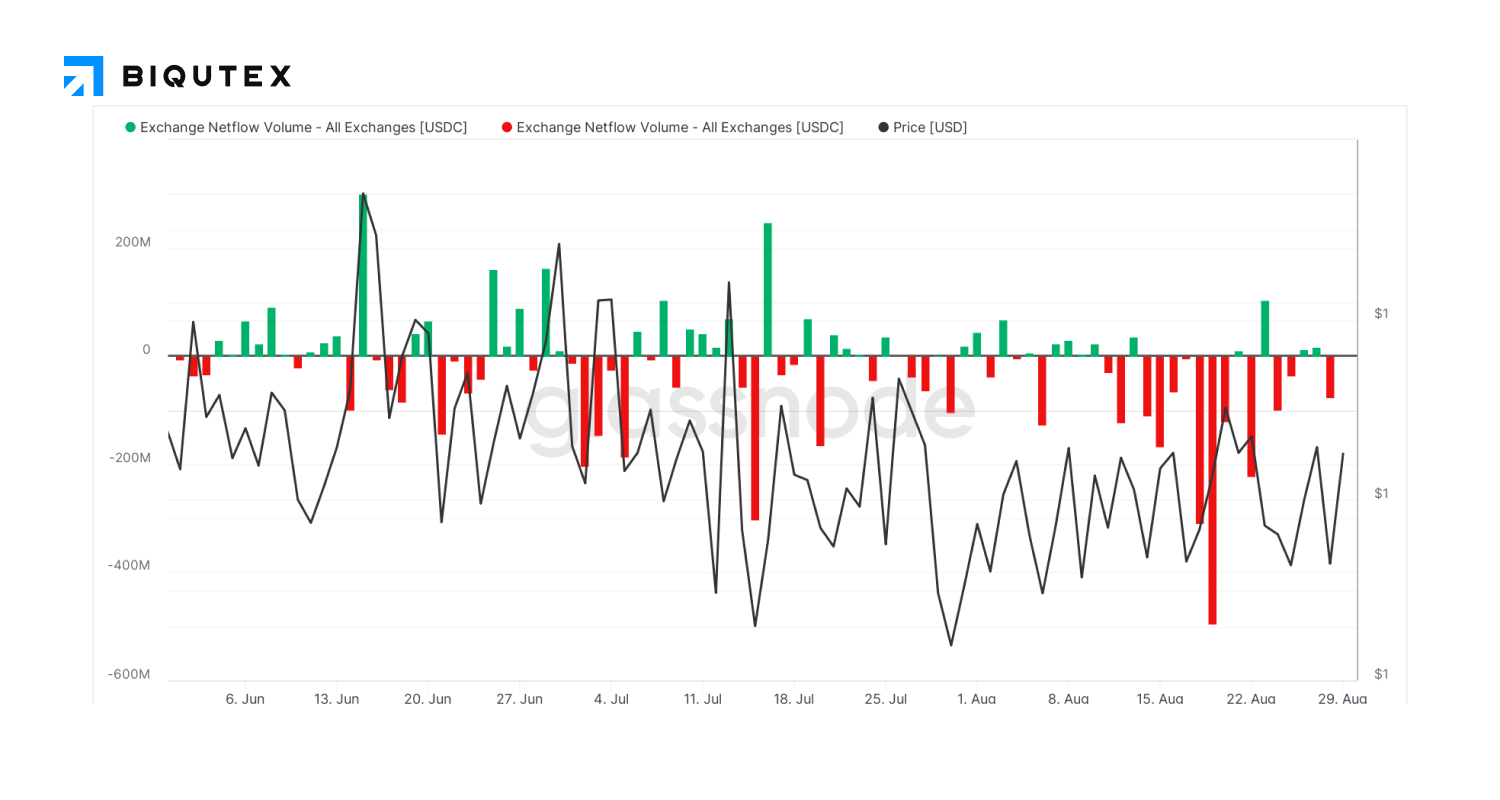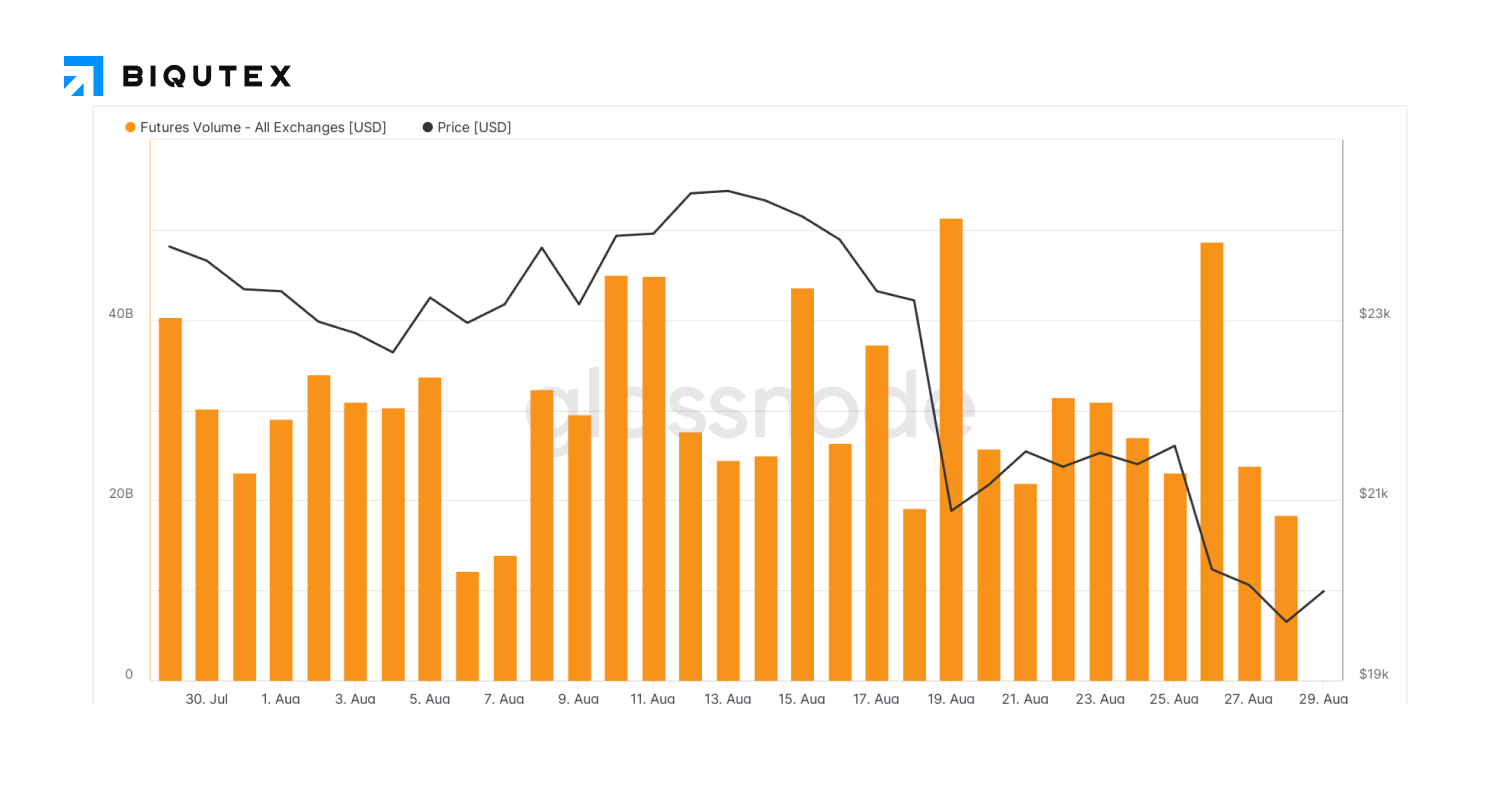The Derivatives Magazine #16


After a period of relative stabilisation and recovery over the past few weeks, the crypto market has again come under pressure from macroeconomic news. The Fed governor's speech at an official event provided market participants with more information about the duration of the high interest rate period. Optimistic predictions about the short-term nature of global tightening policy have been replaced by more pessimistic expectations about the speed, size and duration of high central bank rates. As a result, crypto market capitalisation fell 10% to $938 billion at the start of the week.
The drop in the price of major crypto assets (as highly correlated to the traditional finance market) led to significant liquidations over the weekend, totalling more than $350 million. Long positions in ETH and BTC accounted for the bulk of the volume - $164 million and $93 million, respectively. Liquidations in other cryptocurrencies were much smaller, not exceeding $40 million in total.

The drop in price on the spot markets led to a significant increase in demand for hedging short positions on September and December futures for ETH. The funding rate reached -17% (short positions pay long positions) and differed significantly from the corresponding rates for BTC, which were in the 0-2% range (except for OKX, where borrowing costs reached 12% amid doubled open interest).

The possible change in the global environment was particularly noticeable in the perpetual swap trading segment. Borrowing rates for short ETN positions on Binance, BYBIT and OKX ranged from -25% to -39%, with the largest exchanges having the best rate on FTX -12%. The more contrasting figures for BTC, whereas in the futures market, the rate was quite low and ranged from -16% on Bitmex to +9% on OKX.


The reassessment of the legal risks of ownership and use of stablecoins by traders has also proved noteworthy. After OFAC sanctioned Tornado Cash's smart contracts, a number of stablecoin issuers (notably USDC) preliminarily announced the subsequent blocking funds at addresses associated with the platform. The result was not long in coming - some users and traders of centralised exchanges switched from USDC to USDT, which is more resistant to potential sanctions.


The trading volume of futures continues to be stable despite the price drop. For ETH, after a daily peak of $50 billion, trading volume did not fall below $20 billion. Similar figures were also typical for BTC - the local weekly peak of $50 billion on liquidation was replaced by a low of $18 billion..
A general adjustment in the timing of the conditions to restore new liquidity from Q4 2022 to mid-2023 by the regulator has forced market participants to lower mid-term market growth forecasts. The willingness of US fiscal and financial authorities, followed most likely by representatives of other major central banks to sacrifice economic growth in favour of controlling inflation suggests that pressure on global asset prices will continue. This could lead to new annual lows for BTC and ETH in the near future.
This overview was prepared by the analytics department of the Biqutex crypto derivatives exchange



